Last Updated on July 25, 2024
Frameworks offer a significant advantage in Java development by providing a structured foundation and reusable components. This accelerates development, enhances code quality, and improves overall efficiency.
In the following sections, we’ll provide an overview of the most popular Java frameworks in 2024.
1. Spring Framework
Spring Framework was first introduced in 2003 by Rod Johnson, who detailed it in his book “Expert One-on-One J2EE Design and Development”.
It was created to address the complexity of enterprise application development using Java. At the time, Java 2 Enterprise Edition (J2EE) was the standard for building enterprise applications, but it was often criticized for being overly complex and difficult to use.

Spring was invented to simplify Java development by promoting good programming practices such as programming to interfaces, favoring composition over inheritance, and reducing coupling between components.
The creators aimed to provide a lightweight alternative to J2EE that would make Java programming more accessible, testable, and modular.
Composition
Spring Framework is comprised of several modules.
Core Container provides fundamental IoC (Inversion of Control) and DI (dependency injection); Data Access/Integration supports database interactions; Web offers tools for developing web applications, including Spring MVC; AOP (Aspect Oriented Programming)enables modularization of cross-cutting concerns; Test facilitates testing; Spring Boot simplifies application creation; and Spring Security offers comprehensive security services.
Current Relevance and Challenges
Spring remains highly relevant in today’s Java development landscape.
Its flexibility, comprehensive feature set, and large ecosystem make it a go-to choice for many enterprise applications.
Spring Boot, in particular, has gained immense popularity for its ability to quickly bootstrap applications with minimal configuration.
Spring Framework faces several challenges. Its extensive module set, while offering versatility, can be daunting for beginners. Performance can be impacted if features aren’t used optimally. Maintaining alignment with Java’s rapid evolution is crucial.
The surge in microservices architecture has introduced competition from more specialized frameworks. Acquiring proficiency in Spring and its ecosystem necessitates substantial investment in time and effort.
While powerful, Spring is not without its complexities and the need to adapt to an evolving technological landscape.
Future Perspectives
Spring Framework is continually evolving to address modern development challenges.
Key focus areas include bolstering cloud-native capabilities, enhancing reactive programming support for scalable applications, and providing better tools for serverless development.
Integration with AI and machine learning is expanding, while configuration simplification and performance optimization are ongoing priorities.
To foster full-stack development, Spring is improving compatibility with modern front-end technologies. These advancements aim to equip developers with a robust platform for building innovative, high-performance applications in today’s dynamic tech landscape.
As the Java ecosystem continues to evolve, Spring’s ability to adapt to new paradigms while maintaining its core principles of simplicity and modularity will be key to its future success. By addressing current challenges and leveraging its vast community and ecosystem, Spring has the potential to remain a dominant force in Java application development.
As long as Spring continues to innovate and integrate with emerging technologies and practices, it should maintain its position as a cornerstone of Java enterprise development, particularly in organizations that value a comprehensive, integrated approach to building applications.
2. Hibernate
Hibernate was first introduced in 2001 by Gavin King and a group of collaborators. It was created to address the complex challenge of persisting Java objects to relational databases.
At the time, developers were struggling with the object-relational impedance mismatch, where the object-oriented model of Java didn’t align well with the relational model of databases.
Hibernate was invented to provide a more natural and efficient way of mapping Java objects to database tables.

The creators aimed to simplify database operations, reduce boilerplate code, and allow developers to work with persistent objects using ordinary Java API, without having to deal directly with SQL or JDBC.
Composition
Hibernate is an Object-Relational Mapping (ORM) framework that simplifies database interactions. The SessionFactory is a shared, thread-safe object responsible for creating Session instances. A Session represents a single unit of work and is not thread-safe.
Transactions manage database operations within a Session. Configuration settings define how Hibernate interacts with the database. Query and Criteria API provide flexible ways to retrieve data. Caching improves performance by storing frequently accessed data.
Mapping metadata defines how Java objects relate to database tables. Dialects ensure database-specific SQL generation.
Current Relevance and Challenges
It remains highly relevant in Java enterprise development.
Its ability to abstract away database operations and provide a consistent API across different database systems continues to be valuable. It’s widely used in conjunction with frameworks like Spring and forms a core part of Java EE (now Jakarta EE) via the Java Persistence API (JPA), for which Hibernate serves as a popular implementation.
However, Hibernate faces several challenges in the current development landscape:
Performance optimization is critical due to potential configuration issues that can impact application speed.
Mastering Hibernate’s intricacies requires a learning curve, and its abstraction layer can sometimes obscure database-level optimizations. Adapting to evolving database technologies is essential for Hibernate’s continued effectiveness.
Additionally, the rise of NoSQL and polyglot persistence environments poses challenges to Hibernate’s relational-focused approach.
Future Perspectives
As the data persistence landscape continues to evolve, Hibernate’s ability to adapt to new paradigms while maintaining its core strengths in ORM will be crucial to its future success. By addressing current challenges and leveraging its extensive ecosystem and community support, Hibernate has the potential to remain a fundamental tool in Java application development.
To address this, it needs to enhance its reactive programming capabilities to cater to high-concurrency environments.
Expanding support for non-relational databases is crucial to broaden its applicability. Performance optimization tools and simplified configuration can improve user experience.
Cloud-native features and machine learning integration are essential for staying competitive in modern development paradigms. By focusing on these areas, Hibernate can solidify its position as a leading ORM framework.
The framework’s commitment to simplifying database operations and its continued evolution through the JPA specification suggest a stable future.
As long as Hibernate continues to evolve and integrate with emerging technologies and practices, it should maintain its position as a key player in the Java persistence ecosystem, particularly in enterprise environments that rely heavily on relational databases.
3. Google Web Toolkit (GWT)
Released in 2006 by Google, GWT is an open-source framework that bridges the gap between Java and web development. It allows developers to write and maintain complex web applications entirely in Java.
GWT then takes that Java code and compiles it into highly optimized JavaScript, HTML, and CSS. This compiled code runs efficiently in web browsers, delivering a seamless user experience.
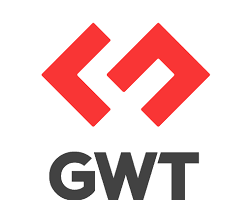
Composition
At its heart, GWT facilitates the creation of web applications using the familiar syntax and vast ecosystem of the Java programming language.
GWT’s core functionality lies in its ability to compile Java source code into highly optimized JavaScript. This compiled code executes efficiently within web browsers, ensuring a smooth and responsive user experience. The framework handles the complexities of browser compatibility and cross-platform functionality, freeing developers to focus on application logic and user interface design.
It provides widgets and components for building user interfaces, simplifying the creation of interactive elements like buttons, menus, and forms. Additionally, GWT integrates seamlessly with various server-side technologies, enabling developers to leverage Java frameworks like Spring for building robust back-end functionalities.
One of the most significant advantages of GWT is its emphasis on maintainability. The use of Java for web development fosters a well-structured and readable codebase. This improves code collaboration and facilitates easier maintenance and updates compared to working solely with JavaScript.
Additionally, GWT’s built-in unit testing framework enables developers to write comprehensive tests, ensuring bug-free and reliable applications.
Relevance and Challenges
Frameworks like React, Angular, and Vue.js dominate the web development landscape, offering a more direct approach using JavaScript. Developers might find these frameworks more aligned with current trends.
GWT’s focus on performance and well-structured code might still be attractive for developers prioritizing these aspects, especially for complex applications.
Future
Looking ahead, the future of GWT might lie in its ability to adapt to the evolving web development ecosystem.
Potential areas for growth could be enhanced integration with modern frontend frameworks like React for specific functionalities, or further streamlining the development process to match the rapid feedback loops offered by newer contenders.
GWT might occupy a niche role for specific scenarios where its strengths in performance, Java integration, and structured development are highly valued.
As Java itself evolves and potentially incorporates features for web development, GWT could benefit and remain relevant for developers working within the Java ecosystem.
4. Play Framework
The Play Framework was first introduced in 2009 by Guillaume Bort while working at Zenexity (now Zengularity). It was created to address the growing need for a more efficient and developer-friendly web application framework in the Java ecosystem.
At the time, many Java web frameworks were considered cumbersome and slow to develop with, often requiring significant configuration and lacking support for modern web development practices.

Play was invented to bring the rapid development experience of frameworks like Ruby on Rails to the Java world, while maintaining the performance and scalability benefits of the Java Virtual Machine (JVM). The creators aimed to provide a stateless, lightweight, web-friendly architecture with hot reloading capabilities, making it easier for developers to build scalable web applications.
Composition
Play Framework is built on a model-view-controller (MVC) architectural pattern, which separates the application logic into three interconnected components. It is designed to be modular and flexible, allowing developers to easily extend its functionality.
It offers a comprehensive set of features for building web applications. Its routing system efficiently maps incoming HTTP requests to controllers, which handle application logic. Models encapsulate data and business rules.
Views, typically written in Scala or Java, render the user interface. The framework includes asset management for optimizing JavaScript and CSS, and seamless integration with databases through ORMs like Ebean or JPA.
Dependency injection is supported through Guice, and Akka integration facilitates building concurrent and distributed systems. These components combined provide a robust foundation for developing scalable and reactive web applications.
Play is primarily written in Scala but supports both Java and Scala as programming languages for application development. This dual-language support allows developers to leverage the strengths of both languages within the same framework.
Relevance and Challenges
Play Framework remains relevant in today’s web development landscape due to its focus on developer productivity, scalability, and performance.
Its stateless architecture makes it well-suited for building reactive applications and microservices. The framework’s support for both Java and Scala also contributes to its continued popularity, especially in enterprises that use the JVM ecosystem.
The growing dominance of JavaScript full-stack frameworks has diverted some developer interest. While Play promotes developer-friendliness, its functional programming leanings may pose a learning curve for Java developers accustomed to traditional approaches.
Additionally, the Play community, although active, is smaller than some competitors, potentially limiting resource and library availability. These factors influence Play’s position in the market and its adoption among developers.
Future Perspectives
Play Framework has the potential to further solidify its position in the web development landscape by focusing on several key areas.
Strengthening support for cloud-native development, including seamless integration with Docker and Kubernetes, is essential for aligning with modern deployment practices.
Embracing reactive programming will enhance Play’s ability to build highly scalable and responsive applications. Staying competitive requires continuous performance optimization and a commitment to integrating emerging technologies like GraphQL, WebSockets, and serverless architectures.
Lastly, improving developer experience through enhanced tooling, documentation, and onboarding will attract a wider developer community.
As the web development landscape continues to evolve, the Play Framework’s ability to adapt to new trends and maintain its focus on developer productivity and performance will be key to its future success.
By leveraging its strengths in the JVM ecosystem and addressing current challenges, Play has the potential to remain a relevant and powerful tool for building modern web applications.
5. Grails
Grails was first introduced in 2006 by Graeme Rocher while working at G2One, which was later acquired by SpringSource (now part of VMware).
The framework was created to address the need for a more productive and agile web application development platform in the Java ecosystem. At the time, many Java-based web frameworks were considered complex and time-consuming to work with, often requiring extensive configuration and boilerplate code.
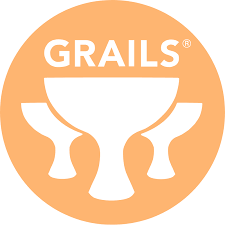
Grails was invented to bring the “convention over configuration” paradigm and rapid application development principles popularized by Ruby on Rails to the Java Virtual Machine (JVM) world.
The creators aimed to combine the flexibility and ease of use of dynamic languages with the robustness and performance of the JVM, making it easier for developers to build scalable web applications quickly.
Composition
Grails is built on top of several established Java technologies, including Spring, Hibernate, and Groovy. It follows the model-view-controller (MVC) architectural pattern and emphasizes convention over configuration to reduce the amount of code developers need to write.
Grails is a full-stack web application framework built on the Groovy language, providing a rapid development experience. It leverages Groovy’s concise syntax for efficient coding and offers domain-specific languages (DSLs) for streamlined configuration.
(Grails Object Relational Mapping)GORM simplifies database interactions, while (Grails Server Pages)GSP handles view generation. Controllers manage request handling, and services encapsulate business logic. A rich plugin ecosystem extends Grails’ capabilities, and built-in testing support ensures code quality. Grails’ convention-over-configuration approach further accelerates development by providing sensible defaults and reducing boilerplate code.
Grails leverages the Spring framework for dependency injection and other core functionalities, while also providing its own set of conventions and abstractions to simplify development.
Current Relevance and Challenges
Grails continues to be relevant in the web development landscape, particularly for organizations already invested in the Java ecosystem.
Its rapid development capabilities, coupled with the ability to leverage existing Java libraries and tools, make it an attractive option for building web applications and REST APIs.
Grails faces several challenges in the modern development landscape.
The emergence of competing frameworks like Spring Boot and Micronaut, including the latter’s shared origins, has intensified competition.
While Grails prioritizes developer productivity, the Groovy language and framework conventions can present a learning curve for those unfamiliar with the ecosystem. Performance perceptions, compared to more lightweight alternatives, can also be a factor.
The rapid evolution of front-end technologies demands continuous adaptation to maintain relevance in modern web development.
Future
Grails faces increasing competition in the Java ecosystem. To maintain its relevance, it must adapt to modern development trends.
Stronger support for microservices architecture, cloud-native development, and containerization is essential. Performance optimizations, especially in startup time, are crucial.
Leveraging Groovy language advancements can enhance developer experience. Integration with modern front-end frameworks is vital for staying competitive in web development.
Focusing on building robust APIs can position Grails effectively in the API-driven economy. By addressing these areas, Grails can solidify its place as a viable option for enterprise application development.
As the web development ecosystem continues to evolve, Grails’ ability to adapt to new trends while maintaining its focus on productivity and leveraging the JVM ecosystem will be key to its future success.
By addressing current challenges and building on its strengths in rapid application development, Grails has the potential to remain a valuable tool for developers seeking to build web applications quickly and efficiently on the JVM platform.
6. Java Server Faces
JavaServer Faces (JSF), now Jakarta Server Faces, was first introduced in 2004 by Sun Microsystems as part of the Java Community Process. It was created to address the growing need for a standardized, component-based web application framework in the Java ecosystem.
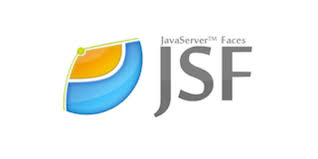
At the time, web development in Java was often complex and lacked a unified approach for building user interfaces.
JSF was invented to simplify the development of user interfaces for Java-based web applications by providing a component-centric approach. The framework aimed to abstract away many of the low-level details of HTTP and HTML, allowing developers to think in terms of reusable UI components rather than markup and request handling.
Composition
JavaServer Faces is built on a component-based architecture that separates the application logic from the presentation layer.
It is a component-based framework for building web UIs. UI components encapsulate both functionality and rendering logic. Managed Beans handle application logic and state management. Expression Language provides a simple way to access and manipulate data.
Navigation Model defines page flow rules. The framework offers built-in conversion and validation mechanisms. Event handling manages user interactions. Render Kits adapt components to different client technologies. faces-config.xml is used for configuration.
JSF follows a request-processing lifecycle that includes phases for restoring view state, applying request values, validating inputs, updating the model, and rendering the response. This structured approach helps developers manage the complexities of web application development.
Current Relevance and Challenges
JavaServer Faces remains relevant in enterprise Java development, particularly in large organizations with significant investments in Java EE technology.
Its standardization as part of Java EE (Jakarta EE) ensures long-term support and compatibility across different application servers.
Its component-based model, while structured, can be less flexible compared to modern, free-form approaches.
Additionally, performance concerns, particularly regarding initial page load times, have been raised. The framework’s learning curve can be steep, especially for developers accustomed to simpler alternatives.
Rapid advancements in front-end technologies have presented challenges in keeping JSF up-to-date. Coupled with the rise of lightweight Java frameworks and JavaScript-based solutions, JSF’s market share has declined.
Future Perspectives
To remain competitive, it must enhance integration with popular JavaScript frameworks, strengthen support for RESTful architectures, and simplify its development model. Optimizing performance, particularly rendering speed, is crucial.
Adapting to cloud-native environments and microservices architectures is essential. As part of Jakarta EE, JSF can benefit from community-driven evolution to address emerging trends and developer needs. By focusing on these areas, JSF can regain its position as a viable option for building web applications.
While JavaServer Faces may not be the trendiest framework in web development, its strong foundation in the Java ecosystem and continued evolution through the Jakarta EE process suggest a stable future. By addressing current challenges and embracing modern web development practices, JSF can continue to serve as a valuable tool for building robust, component-based web applications, particularly in enterprise environments that prioritize standardization and long-term support.
7. Dropwizard
Dropwizard was first introduced in 2011 by Coda Hale while working at Yammer. It was created to address the need for a lightweight, production-ready framework for building RESTful web services in Java. At the time, many Java frameworks were considered heavyweight and required significant configuration and setup time.
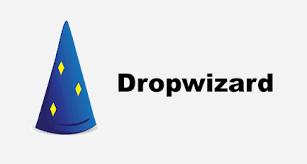
Dropwizard was invented to simplify the process of building and deploying production-quality web applications and microservices. The creators aimed to provide a framework that combined several best-of-breed libraries into a cohesive package, allowing developers to focus on writing application logic rather than dealing with infrastructure concerns.
Dropwizard is a full-stack Java framework built on a combination of robust libraries.
Jetty serves as the embedded HTTP server, handling incoming web requests.
Jersey provides RESTful web services capabilities based on JAX-RS.
Jackson efficiently handles JSON data, while Metrics offers comprehensive application monitoring. Guava contributes essential utility classes, and Logback manages logging.
Hibernate Validator ensures data validation, and YAML provides a user-friendly configuration format. Together, these components form a powerful foundation for building high-performance, maintainable, and scalable web applications.
Dropwizard follows a modular architecture, allowing developers to easily swap out components if needed. It emphasizes convention over configuration, providing sensible defaults while still allowing for customization.
Current Relevance and Challenges
Dropwizard remains relevant in today’s microservices-oriented development landscape due to its lightweight nature and focus on building RESTful services. Its out-of-the-box support for metrics, health checks, and operational tools makes it particularly well-suited for deploying and monitoring services in production environments.
It faces competitive pressures from lightweight frameworks like Spring Boot and Micronaut. While it boasts a dedicated community, its ecosystem of third-party components remains relatively smaller.
Despite its simplicity, new users may encounter a learning curve. Dropwizard’s focus on RESTful services limits its applicability to complex, full-stack web applications. Although effective for building standalone HTTP services, its scope may restrict its suitability for broader project requirements.
Future Perspectives
Dropwizard faces increasing competition in the Java ecosystem.
To maintain its relevance, it should prioritize enhancing support for cloud-native development and containerization. Integrating reactive programming models can expand its capabilities for building highly concurrent applications.
As the microservices and API development landscape continues to evolve, Dropwizard’s ability to maintain its simplicity and production-readiness while adapting to new trends will be key to its future success. By leveraging its strengths in building lightweight, monitored services and addressing current challenges, Dropwizard has the potential to remain a relevant and powerful tool for building modern web services and microservices in Java.
The framework’s commitment to simplicity and its focus on providing a complete, production-ready package out of the box will likely continue to appeal to developers looking for a no-nonsense approach to building robust web services. As long as Dropwizard continues to evolve and integrate with emerging technologies and practices, it should maintain its position as a valuable option in the Java web development ecosystem.
8. Vaadin
Vaadin was first introduced in 2002 by Ari Aarnio, initially as a proprietary framework called IT Mill Toolkit.
It was later renamed and open-sourced as Vaadin in 2009. The framework was created to address the need for a more efficient and developer-friendly way to build web applications using Java. At the time, Java web development often required developers to work with multiple technologies and languages, leading to increased complexity and longer development cycles.

Vaadin was invented to allow Java developers to create rich web applications using only Java, without the need to learn HTML, JavaScript, or CSS. The creators aimed to provide a framework that would leverage the strengths of Java’s object-oriented programming model and existing Java ecosystems while delivering modern, responsive web user interfaces.
Composition
Vaadin is composed of several key components that work together to provide a comprehensive web application development platform:
Its core components include a server-side API for handling UI logic and a client-side engine for rendering. It offers pre-built themes and layouts for consistent design, a robust data binding system for connecting UI to data, and a comprehensive event handling mechanism.
Vaadin’s Flow component manages server-client communication and UI updates. Additionally, a rich ecosystem of add-ons and components is available. Fusion, a newer addition, enables hybrid app development using TypeScript and Web Components.
Vaadin follows a component-based architecture, where UI elements are represented as Java objects. This approach allows for strong typing, easy refactoring, and leveraging of Java’s OOP features in UI development.
Current Relevance and Challenges
Vaadin remains relevant in today’s web development landscape, particularly for Java-centric organizations and developers who prefer working primarily in Java. Its ability to create rich web applications without extensive JavaScript knowledge is still a significant advantage.
Vaadin faces several challenges in today’s development landscape. The dominance of JavaScript frameworks and the trend towards full-stack development pose significant hurdles. Its Java-centric approach, while familiar to Java developers, can present a steeper learning curve for those accustomed to traditional web development.
Performance concerns, often associated with server-side rendering, can arise in demanding applications. Additionally, Vaadin’s abstraction layer can sometimes limit fine-grained control over the UI, which may be required for complex designs.
Future Perspectives
Expanding the hybrid development model offered by Fusion can enhance flexibility.
Stronger support for PWAs (Progressive Web Applications)will align with modern development trends. Performance optimizations, especially in server-client communication, are crucial. Integration with the latest Java features will maintain developer interest. Increased customization options for UI components can address user needs.
Finally, incorporating AI and ML tools can position Vaadin as a leading platform for intelligent applications. By addressing these areas, Vaadin can solidify its position in the competitive web development landscape.
As the web development landscape continues to evolve, Vaadin’s ability to bridge the gap between Java development and modern web interfaces will be key to its future success. By addressing current challenges and leveraging its strengths in Java integration and rapid development, Vaadin has the potential to remain a valuable tool for building sophisticated web applications, particularly in enterprise environments where Java expertise is prevalent.
The framework’s commitment to making web development more accessible to Java developers, combined with its evolution towards supporting modern web technologies, positions it well for continued relevance in the Java ecosystem.
As long as Vaadin continues to adapt to emerging trends while maintaining its core value proposition, it should remain an attractive option for Java-based web application development.
9. Apache Wicket
Apache Wicket was first introduced in 2004 by Jonathan Locke. It was created to address the need for a more object-oriented and component-based approach to web application development in Java. At the time, many Java web frameworks were focused on request/response cycles and required developers to work directly with HTML, which often led to mixing of presentation and business logic.

Wicket was invented to bring the component-based programming model, familiar to desktop application developers, to the web. The creators aimed to provide a framework that would allow developers to think in terms of objects and components rather than pages and requests, making web development more intuitive for Java programmers.
Composition
Apache Wicket is a component-based Java framework for building web applications. It employs a component model that encapsulates UI elements and their behavior, promoting code reusability. Pages serve as top-level containers for components, while models handle data binding.
Markup defines the HTML structure. Wicket provides session management and built-in AJAX support for dynamic updates. Security features like CSRF protection are included.
Wicket follows a stateful programming model, where each user’s interaction with the application is represented by a unique session on the server. This allows for a more desktop-like programming experience but requires careful management of server resources.
Current Relevance and Challenges
Apache Wicket remains relevant in the Java web development ecosystem, particularly for developers who prefer a component-based approach and strong separation of concerns. Its stateful nature and robust component model make it well-suited for complex, interactive web applications.
Wicket faces several challenges in the modern web development landscape. Its component-based model, while powerful, can present a steeper learning curve for developers accustomed to traditional approaches.
Its stateful nature can lead to increased server resource consumption compared to stateless frameworks. Although supporting responsive design, Wicket might require more effort for mobile-first development compared to some contemporary frameworks. The rise of JavaScript-based frameworks and other Java web technologies has intensified competition for Wicket.
Future Perspectives
Apache Wicket has significant potential for growth.
To thrive in the evolving web development landscape, it must enhance JavaScript integration, optimize performance, and bolster support for microservices architectures. Embracing Progressive Web App features and simplifying development processes will broaden its appeal. Additionally, strong cloud-native capabilities are essential for aligning with modern deployment strategies. By addressing these areas, Wicket can solidify its position as a competitive framework for building robust and scalable web applications.
As the web development ecosystem continues to evolve, Wicket’s ability to maintain its component-based philosophy while adapting to new trends will be crucial to its future success. By addressing current challenges and leveraging its strengths in building complex, interactive applications, Wicket has the potential to remain a valuable tool for Java developers seeking a robust, component-oriented framework.
The framework’s commitment to maintaining a clear separation of concerns and providing a true object-oriented approach to web development will likely continue to appeal to developers who value these principles. As long as Wicket continues to evolve and integrate with emerging technologies and practices, it should maintain its position as a distinctive and powerful option in the Java web development landscape.
10. Apache Struts
Apache Struts was first introduced in May 2000 by Craig McClanahan. It was created to address the need for a standardized approach to building web applications in Java, at a time when Java web development was often complex and lacked a unified structure. The Java Servlet API and JavaServer Pages (JSP) were available, but developers still struggled with organizing large-scale web applications effectively.
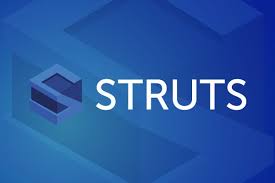
Struts was invented to provide a robust Model-View-Controller (MVC) architecture for Java web applications. The creators aimed to separate the concerns of data management, business logic, and user interface, making web applications easier to develop, maintain, and scale. Struts quickly gained popularity and became one of the most widely used Java web frameworks in the early 2000s.
Composition
Struts is a Java-based MVC framework that follows a request-driven lifecycle. The ActionServlet receives incoming requests and delegates them to Action classes containing business logic. ActionForm beans encapsulate user input.
The struts-config.xml file defines the application’s structure and flow. JSP pages serve as the view, often using Struts’ custom tag libraries. Resource files support internationalization. The framework includes built-in validation and Tiles for creating reusable page layouts.
Struts follows a request-response cycle, where each user action triggers a round trip to the server, with the ActionServlet coordinating the flow of control.
Current Relevance and Challenges
While Struts, particularly Struts 1.x, has largely been superseded by more modern frameworks, Struts 2 (a rewrite of the original Struts) still finds use in some enterprise environments. Its relevance today is primarily in maintaining legacy applications and in organizations that have heavily invested in Struts-based infrastructure.
Struts faces several challenges in today’s web development landscape. Its traditional request-response model can lead to performance bottlenecks compared to modern asynchronous frameworks.
The framework’s XML-based configuration and complex structure can hinder development speed. A history of security vulnerabilities, particularly in older versions, raises concerns.
Additionally, Struts lacks native support for many contemporary web features, and its community and ecosystem have diminished over time. These factors contribute to its declining popularity among developers.
Future Perspectives
Struts is likely to maintain a presence in the Java ecosystem primarily for legacy system support. While new development on the framework may continue, its focus is expected to shift towards security enhancements and potential integration with modern technologies. As Struts usage declines, there is an opportunity for tools and strategies to facilitate migration to newer frameworks. Additionally, preserving knowledge about Struts for historical and educational purposes could become increasingly valuable.
While Struts played a crucial role in the evolution of Java web development, its future in new development is limited. The web development landscape has shifted dramatically since Struts’ introduction, with a move towards more lightweight, modular, and JavaScript-centric approaches.
For organizations still using Struts, the focus will likely be on maintaining existing applications, gradually migrating to more modern frameworks, and ensuring ongoing security. While it’s unlikely to see a resurgence in popularity, Struts remains an important part of the history of Java web development, having influenced many of the frameworks that followed it.
The lessons learned from Struts’ development and usage continue to inform modern web framework design, particularly in areas of structure, separation of concerns, and the importance of adaptability in the fast-changing web development ecosystem.